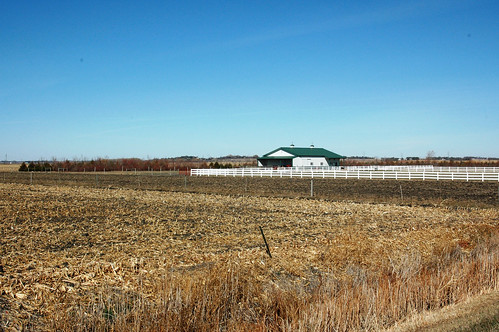
South Dakota’s harsh winters can be tough on a farm or ranch, and conservation improvements like a shelterbelt can help shield buildings, crops and livestock from the wind and snow. Ken Mouw, a CEO-turned-farmer, has used a shelterbelt—a band of trees and shrubs—to protect his Elk Point, S.D. farm against rough weather over the past 10 years.
USDA’s Natural Resources Conservation Service and the Union County Conservation District helped Mouw design the shelterbelt, consisting of trees and shrubs of different heights and densities that all work together to protect from the northern and western winds, keeping snow from collecting in his driveway during a snow storm.
Mouw’s L-shaped shelterbelt has seven rows populated with dogwood, maple, crabapple, hackberry, ash and cedar trees. One side is 660 feet long, and the other is 550.
The surrounding farming community is predominantly cropland, and Mouw’s shelterbelt serves as an oasis for a variety of wildlife, including deer, turkey, rabbit, squirrel and quail.
It also provides privacy and adds aesthetic value to his property. “The colors of the fall leaves are just amazing,” he says.
While NRCS helped design the shelterbelt, financial assistance for the conservation improvement came from the USDA Farm Service Agency’s Conservation Reserve Program. In exchange for a yearly rental payment, farmers like Mouw voluntarily agree to remove land from agricultural production and plant tree and/or grass species that will improve environmental health and quality.
Contracts for land enrolled in CRP are for 10 to 15 years. The long-term goal of the program is to re-establish valuable land cover to help improve water quality, prevent soil erosion and reduce loss of wildlife habitat.
A shelterbelt does take maintenance. Mouw prunes trees and shrubs, cuts the grass between the rows and replaces trees that die.
The shelterbelt is an asset to Mouw’s farm, to which he retired to following a career at the helm of a pork processing company in Iowa. It has helped him return to his agricultural roots on a Sioux City, Iowa farm where his family raised grain and livestock.
If you’re interested in shelterbelts, Mouw recommends visiting your local NRCS office to learn more.
Follow NRCS on Twitter.
Check out other conservation-related stories on the USDA blog.

